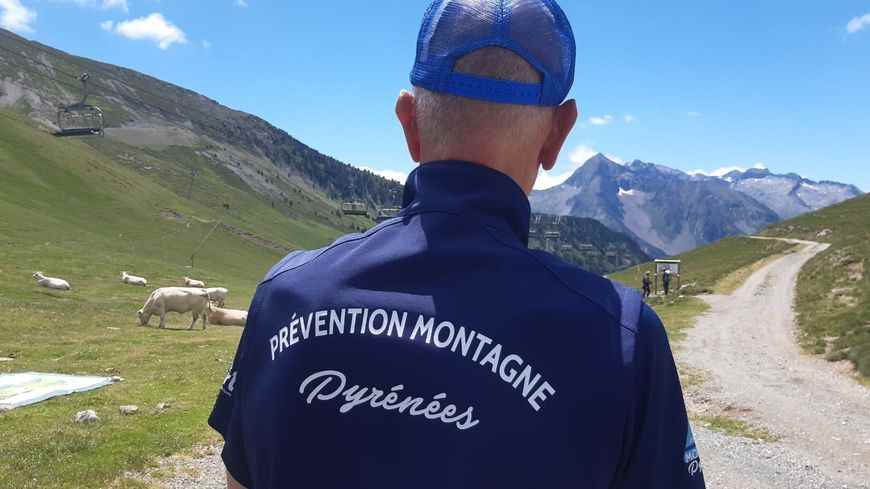Since the coronavirus pandemic and the deconfinement, every year more tourists come to visit or hike in the Pyrenees. More numerous, but not necessarily more experienced or sufficiently well informed about the mountain and its risks. Most are newbies new hikers who do not know the environment well. This observation prompted several mountain players to intensify awareness-raising operations throughout the summer in the Pyrenees National Park, on the Bigorre side.
Explosion in mountain rescue numbers
The mountain rescue units (CRS and PGHM), the Hautes-Pyrénées Sports departmental office, the Pyrenees national park, and the resource center on pastoralism have coordinated to deploy information panels, interventions directly with hikers, in order to inform the public about the good behavior to adopt to protect themselves and the mountain. Awareness in three parts: the safety of hikers, the preservation of the environment, and the respect of pastoralism.
– Flora Catala
Over the past two years, mountain rescue operations have made significant progress. They increased by 58% in 2020 and 39% in 2021 according to the Hautes-Pyrénées prefecture. In most cases, these are small accidentsfor discomfort or sprained ankles specifies Marc Bruning, the director of the Hautes-Pyrénées departmental sports office: “last year there was a lot more help that could have been avoided” he said. “An incredible number of interventions for people with bad shoes, for example, with unsuitable equipment”.
Preserving the environment and pastoralism
Beyond the safety of hikers, mountain stakeholders also notice behavior that harms natural mountain areas. With more visitors, and the also multiplication of new sometimes harmful practices explains Germain Besson, warden at the Pyrenees National Park: “The drone, the electric mountain bike, which give access to more distant spaces, to more and more people”. Practices that can disrupt spaces that were previously in “total tranquility”. A new deal for the park rangers: “new things that until now were not taken into account in the regulations and that we will have to take into account little by little” explains Germain Besson.
This is not to say that the mountain is prohibited – Rodrigue Furcy, prefect of the Hautes-Pyrénées
The Hautes-Pyrénées prefecture also intends, in conjunction with representatives of pastoralism, to raise awareness among hikers about respecting mountain practices: do not approach the herds, pay attention to the Patous, do not interfere with the work of the breeders. “It is not a question of saying that the mountain is prohibited” specifies the prefect Rodrigue Furcy, “on the contrary it is open, it is an environment of ventilation and discovery of nature, but you have to be careful. When you walk you can’t do anything”.

– Flora Catala
Tips and recommendations for enjoying the mountains safely
Before an outing, choose an activity and a route suited to your experience and level. Take advice from professionals such as instructors or mountain guides. Check the regulations of certain activities and practices in the Pyrenees National Park. Let someone know your schedule and your likely return time. Be sure to check the weather forecast. Learn to recognize markup.
Don’t forget to bring enough food and hydration. Choose clothes adapted to the activity and/or the weather, remember to take something to protect yourself (sunglasses, cap). Make sure you have the right equipment (bag, shoes, sleeping bag, tent). Take with you your mobile phone, a detailed map of the places. Carry a knife, whistle and flashlight, as well as a first aid kit.
The Pyrenees National Park reminds you that you cannot bivouac anywhere, that it is forbidden to make fires or barbecues, and that dogs, even on a leash, are not allowed. Also prohibits picking, and mountain biking outside the authorized tracks.
